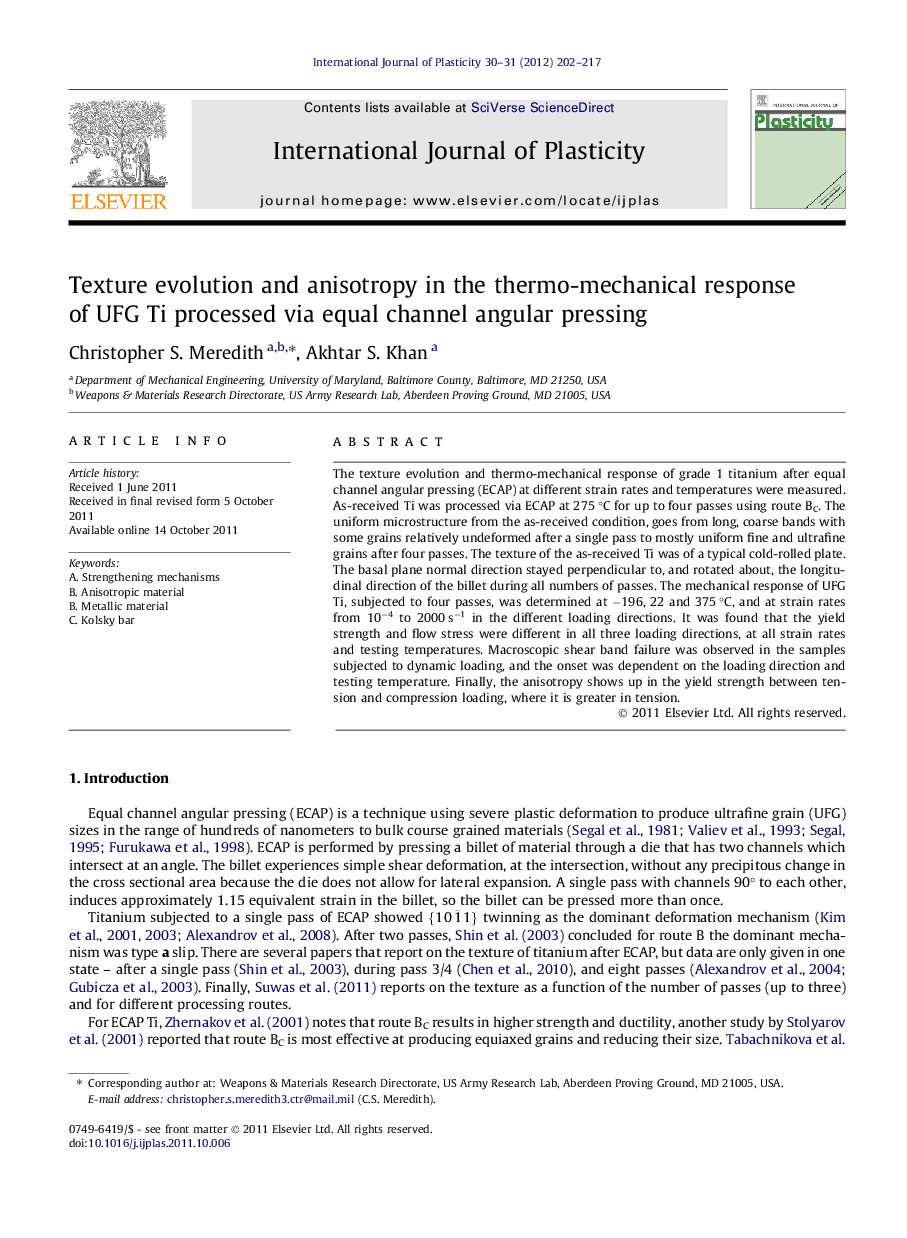| Article ID | Journal | Published Year | Pages | File Type |
|---|---|---|---|---|
| 784446 | International Journal of Plasticity | 2012 | 16 Pages |
The texture evolution and thermo-mechanical response of grade 1 titanium after equal channel angular pressing (ECAP) at different strain rates and temperatures were measured. As-received Ti was processed via ECAP at 275 °C for up to four passes using route BC. The uniform microstructure from the as-received condition, goes from long, coarse bands with some grains relatively undeformed after a single pass to mostly uniform fine and ultrafine grains after four passes. The texture of the as-received Ti was of a typical cold-rolled plate. The basal plane normal direction stayed perpendicular to, and rotated about, the longitudinal direction of the billet during all numbers of passes. The mechanical response of UFG Ti, subjected to four passes, was determined at −196, 22 and 375 °C, and at strain rates from 10−4 to 2000 s−1 in the different loading directions. It was found that the yield strength and flow stress were different in all three loading directions, at all strain rates and testing temperatures. Macroscopic shear band failure was observed in the samples subjected to dynamic loading, and the onset was dependent on the loading direction and testing temperature. Finally, the anisotropy shows up in the yield strength between tension and compression loading, where it is greater in tension.
► Equal channel angular pressing was performed on grade 1 titanium for four passes. ► The initial, uniform microstructure forms mostly ultrafine grains after four passes. ► The yield strength and flow stress were different in the different loading directions. ► Dynamically loaded specimens experienced shear band failure. ► The yield strength in tension was always higher than in compression.
